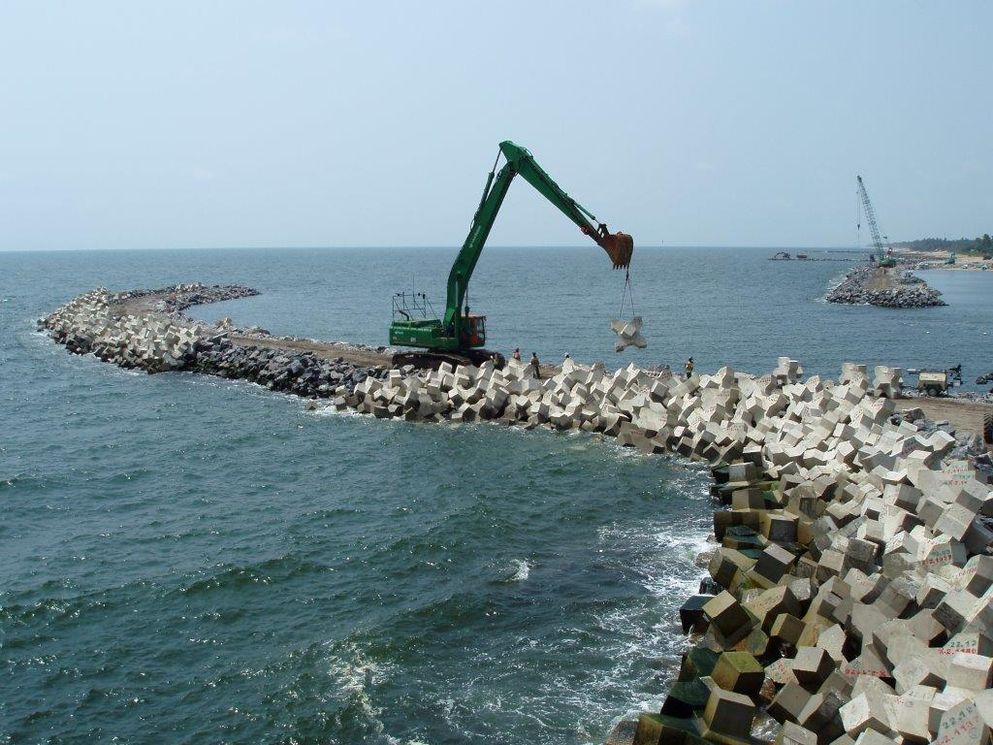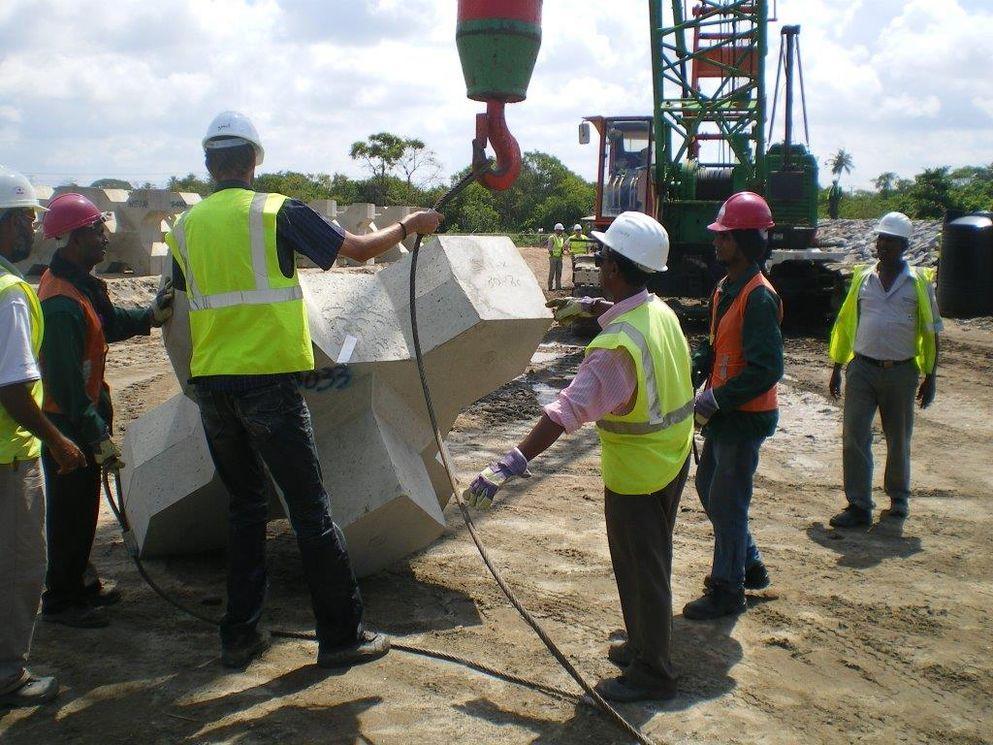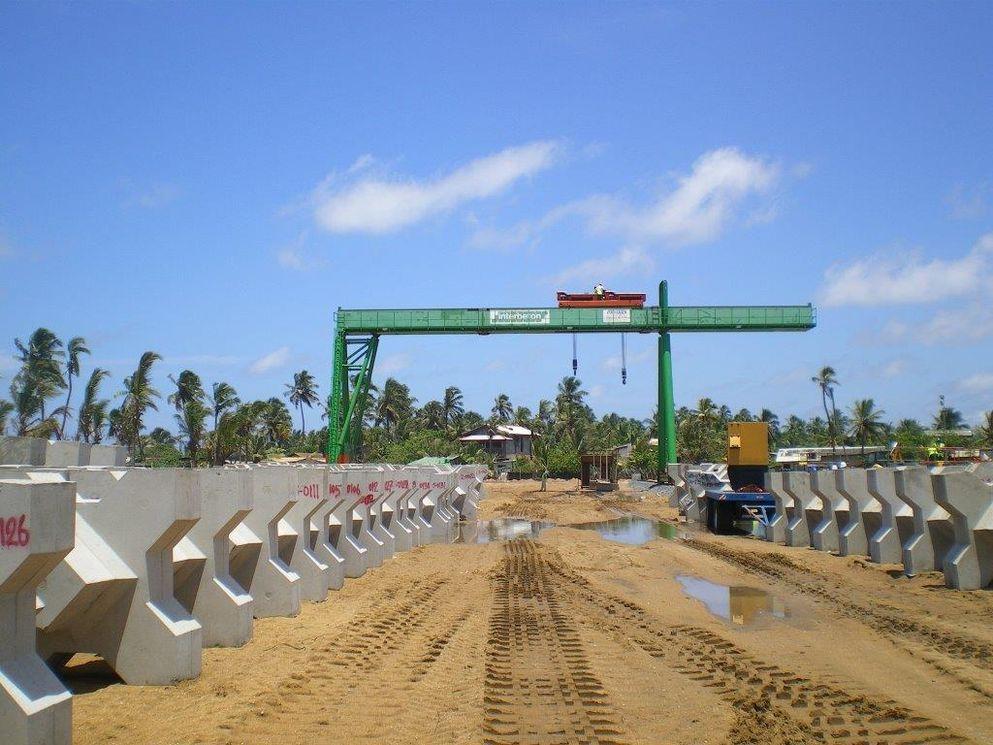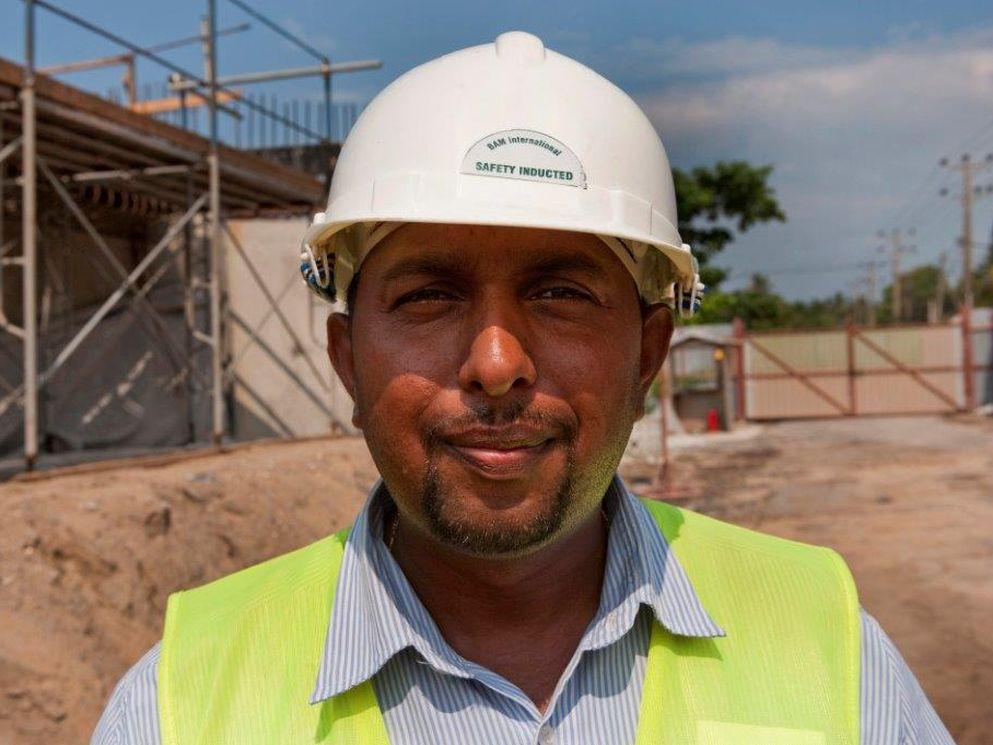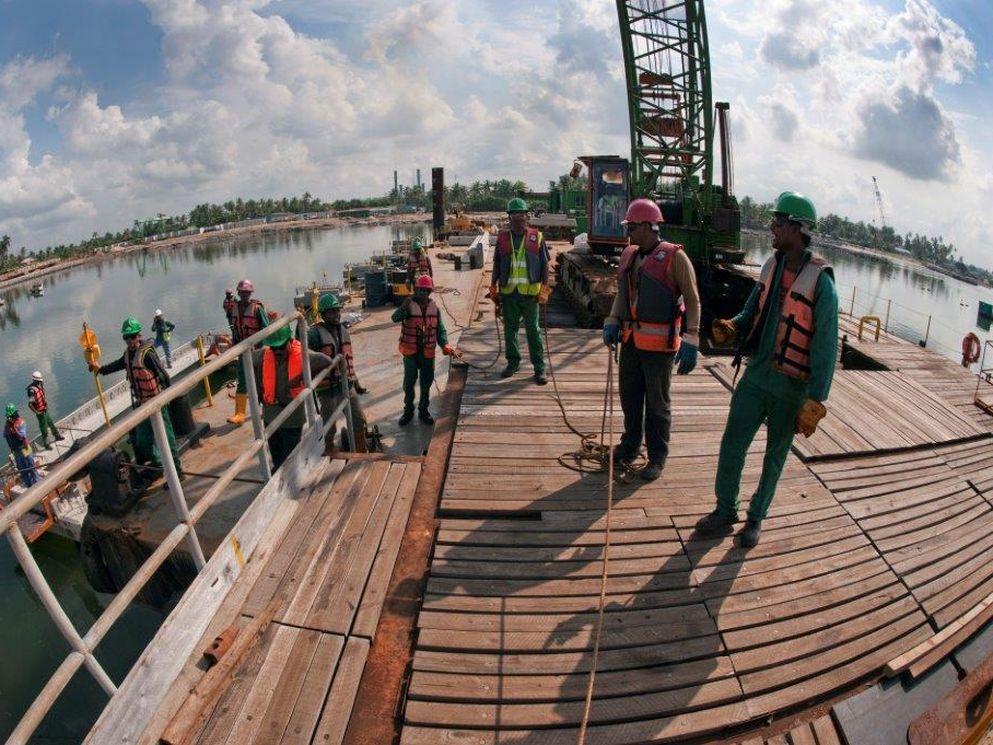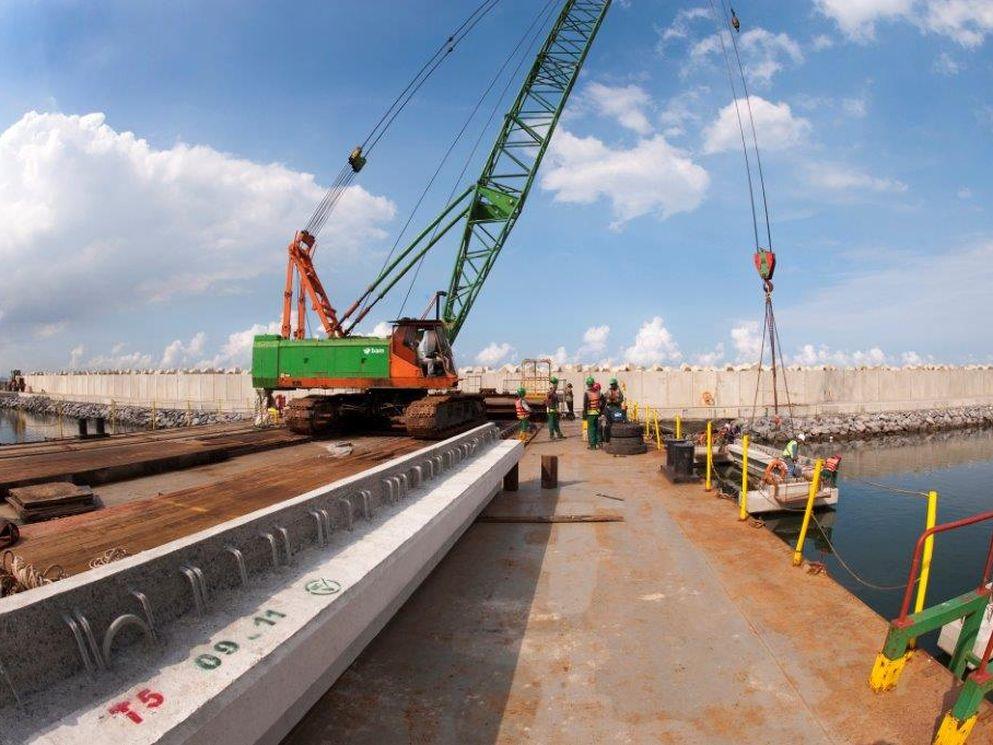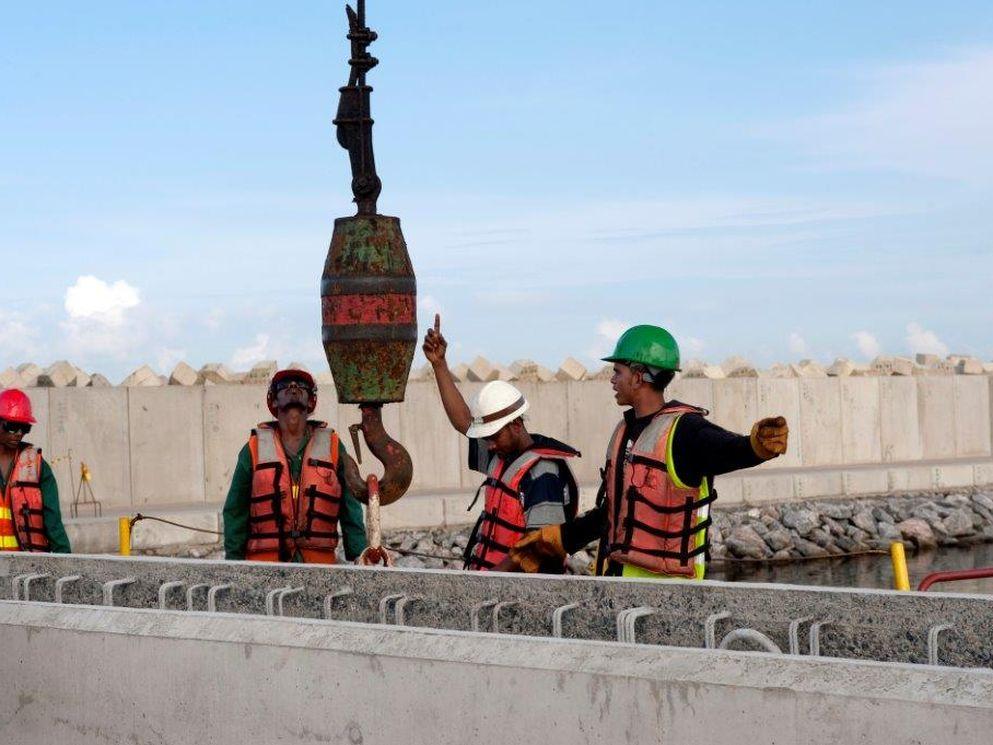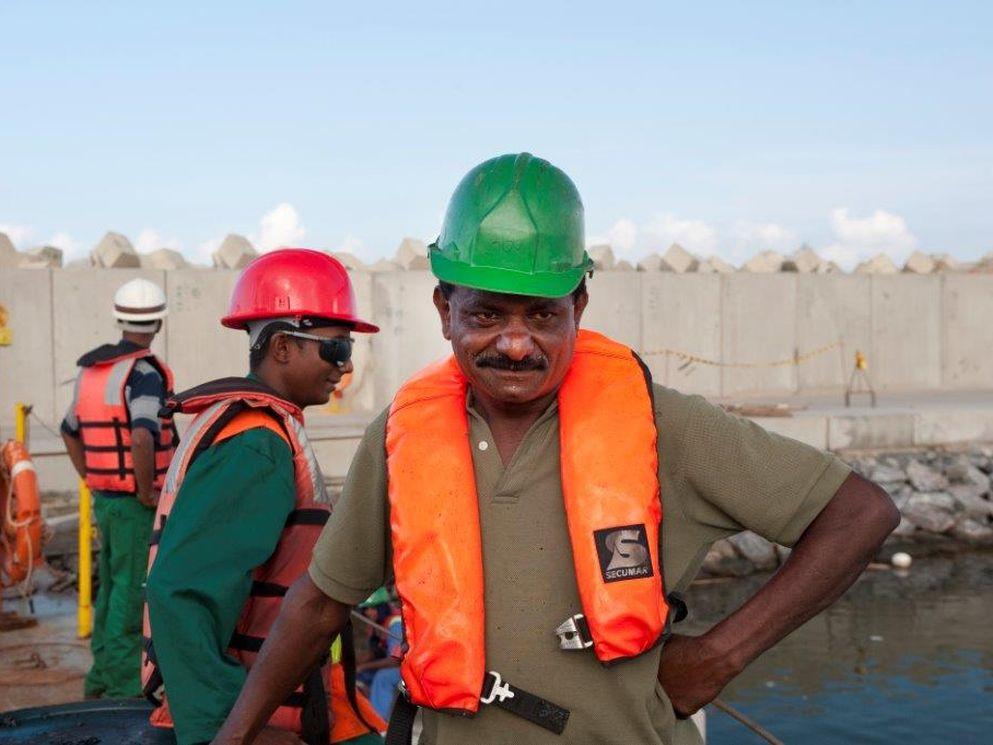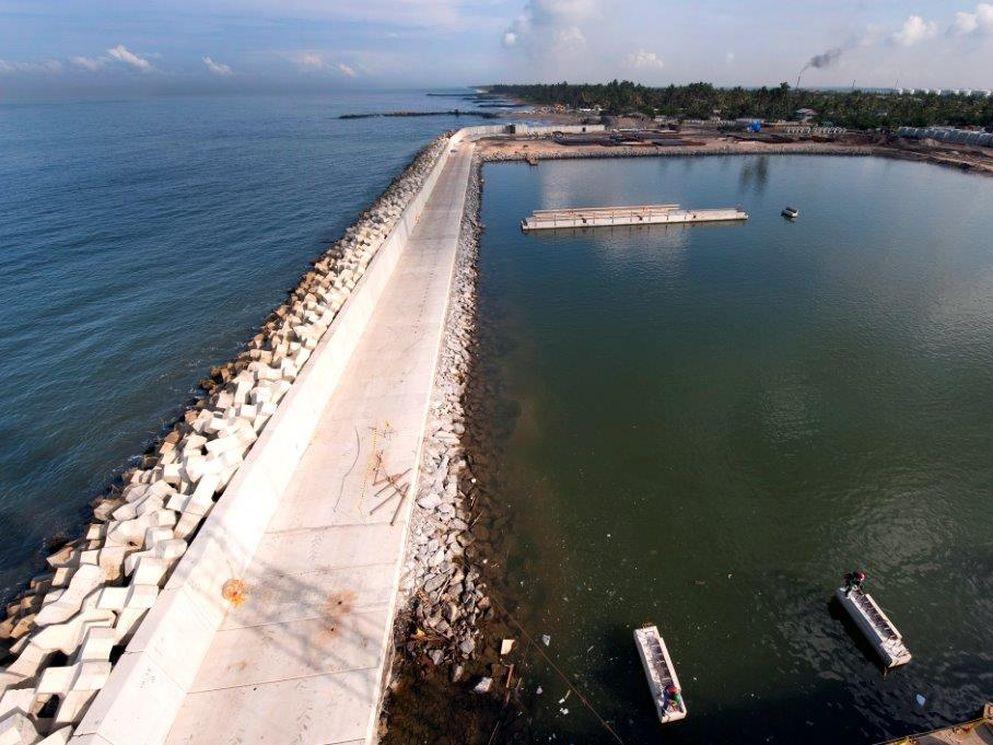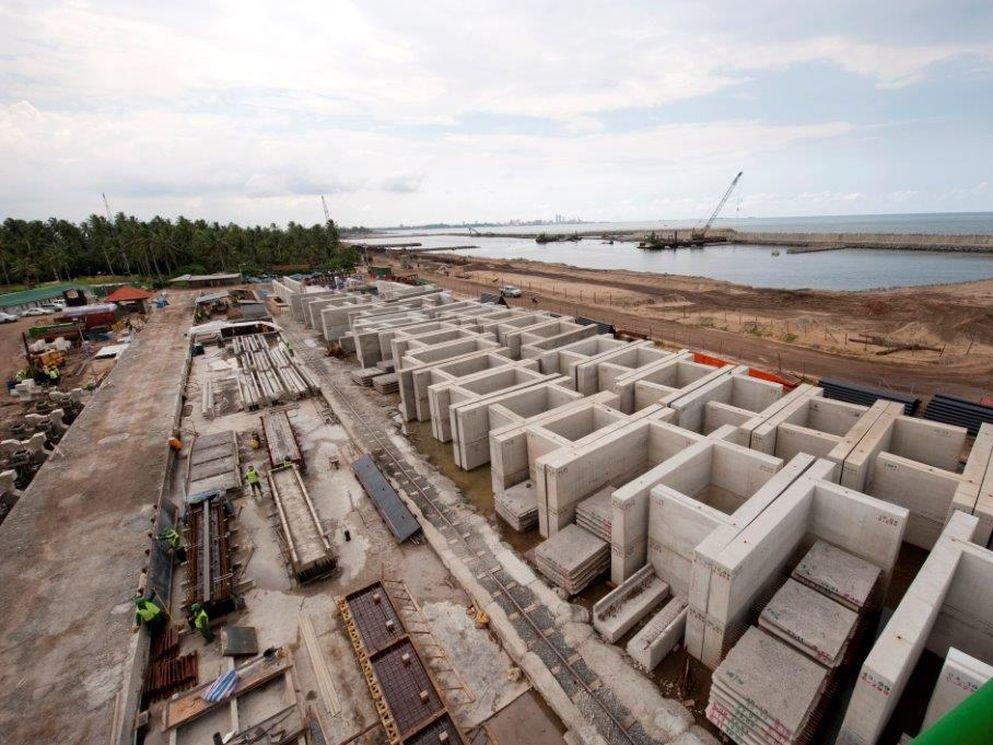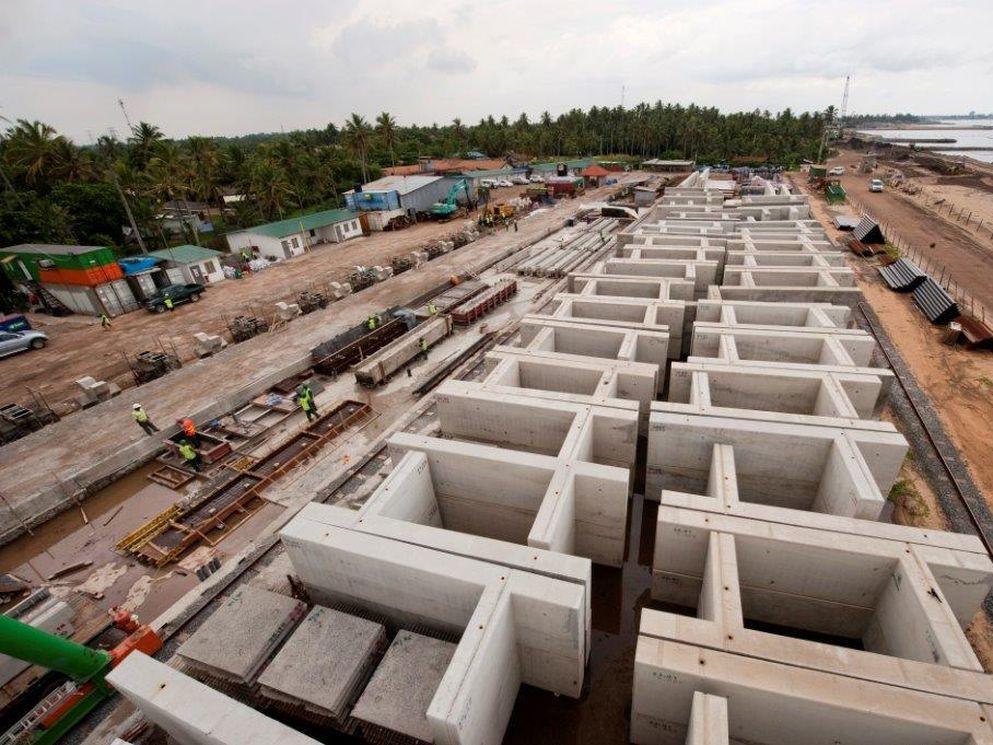
Dikkowita Fishery Harbour, Dikkowita, Sri Lanka
The Ministry of Fisheries and Aquatic Resources commissioned the construction of a new fishery port at the south-eastern coast of Sri Lanka, about 6 km north of Colombo Port. The new Dikkowita Fishery Port serves as an operation base for local fishermen and provides sheltered berthing for approximately 500 fishing vessels, up to 40m in length and is one of South East Asia’s largest fishery harbours. It encloses an area of about 14 ha protected by two breakwaters of a total length of almost 1200 m. DMC has been involved in all aspect of the design including structural, geotechnical and coastal engineering.
Design Involvement
In addition to geotechnical and structural design of all Marine Facilities, DMC have performed comprehensive numerical modelling involving wave transformation, sedimentation and wave penetration studies. Since the new breakwaters are situated on top of an existing steep sandstone reef, a detailed assessment of the local conditions was required. This included 2D physical model testing performed at DMC’s in-house wave flume laboratory in the Netherlands.
DMC also provided assistance/ supervision of 3D physical model testing at LHI in Sri Lanka. Besides the stability of the exposed breakwater toe, the extremely complex subsoil conditions throughout the project area made standard solutions impossible and required particular attention during design of all marine structures.
Facts and Figures
Location
Dikkowita, Sri Lanka
Structure
Fishery Port
Owner/Operator
Ministry of Fisheries and Aquatic Resources
Our client
BAM International
Completion design
2011
Challenge
Fishing vessels used to dock in a sheltered inland channel, sail out large distances to sea where they needed to defy the powerful dangerous surf breaks on a daily basis to go out fishing.
Solution
Design and Construct of a fishery port along the coast, offering shelter for 500 fishing vessels of up to 40m length. The Port basin enclosed 14 ha, protected by two breakwaters of 1200m length. The breakwaters were constructed on a natural rock reef and soil conditions in the port were very challenging.

